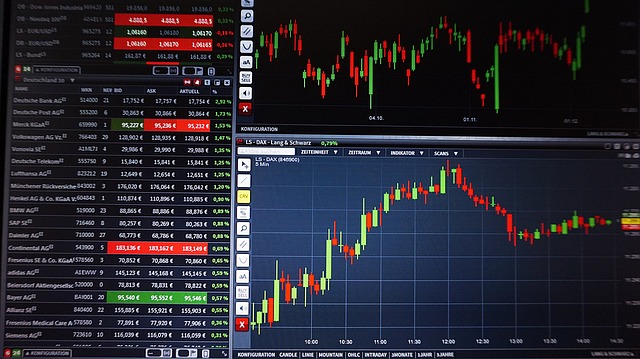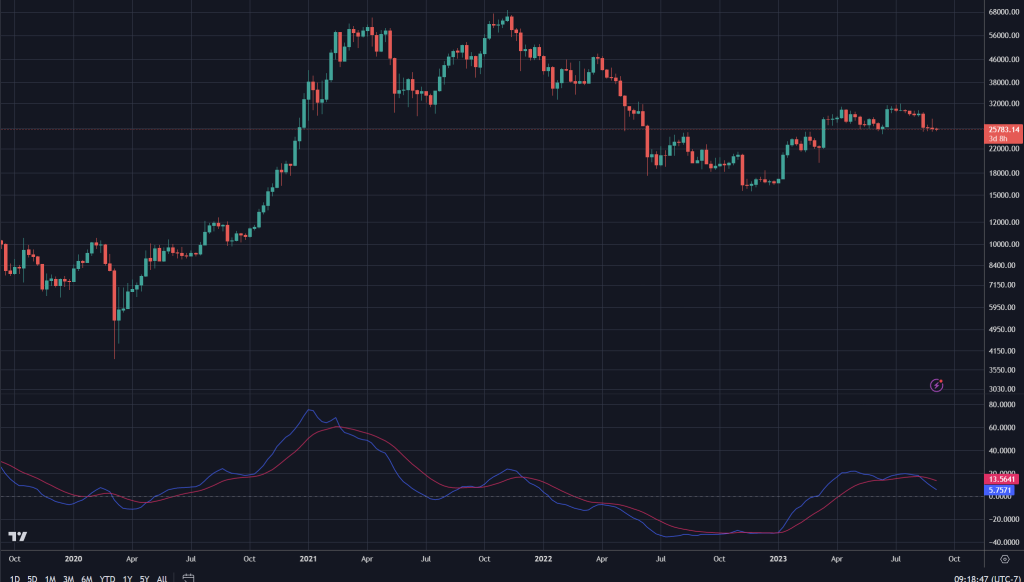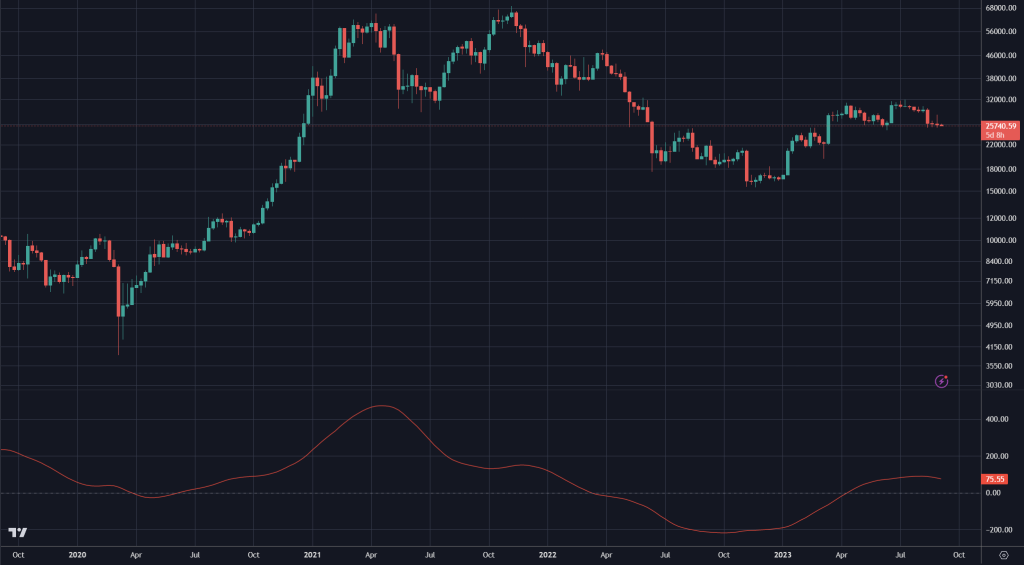
Mastering stock trading might often seem like an overwhelming challenge for many. Did you know it generally takes 1-5 years to become proficient in stock trading? This blog post is designed to navigate you through the complexities of your trading journey, breaking down each stage and offering practical advice along the way.
Ready to embark on this intriguing journey? Let’s get started!
Key Takeaways
- It generally takes 1 – 5 years to become proficient in stock trading.
- Different types of trading have different learning timelines: stocks (1-2 months), options (2-4 months), futures (3-6 months), and forex (3-6 months).
- Fundamental analysis can take months to years to master, while technical analysis can be learned in just a few weeks to a month.
- Choosing between day trading and swing trading depends on your preferred time frame and stress levels. Day trading requires discipline and focus for fast-paced trades, while swing trading offers a longer time frame with less stress.
Factors that Affect the Time to Master Stock Trading
The type of trading, analysis method, and trading approach all contribute to the amount of time it takes to master stock trading.
Type of trading (stocks, options, futures, forex)
Diving into trading, the field presents various options – stocks, options, futures, and forex. Each type demands a unique set of skills and strategies for proficiency. For instance, stock trading involves buying or selling shares in individual companies whereas options trading offers the right to buy or sell such shares at specific prices.
If you lean towards guessing on global economic trends or commodities like gold or grain markets, futures might be your desired playground. Meanwhile, Forex deals with currency pairs and often attracts traders who are open to taking up more risk and volatility.
Keep in mind that each one of these types requires comprehensive understanding before initiating any deals – hasty steps can spearhead significant losses!
Analysis method (fundamental vs. technical)
Fundamental analysis stands out as a method that quantifies a stock’s intrinsic value. It focuses on long-term investments and examines data over multiple years or quarters. By scrutinizing financial statements, economic data, company management details, and competitive advantages, it offers valuable insights into the sustainability of businesses.
By contrast, technical analysis predicts market movement by identifying trends in stock prices. This strategy caters to short-term traders who want to capitalize on immediate returns.
Even though it doesn’t delve deep into companies’ fundamental qualities, it offers a robust structure for understanding market sentiment through patterns in stock charts.
Trading approach (day trading vs. swing trading)
Day trading and swing trading serve as two distinct approaches in the world of stock market. Day trading, a fast-paced strategy, encompasses making multiple trades within a single day, with each trade lasting from seconds to hours.
This method demands keen focus and discipline due to its brief time frames and potential for rapid profit or loss. On the contrary, swing trading operates on a longer timeline as positions are held for days or even weeks at a stretch.
With less stress compared to its counterpart, this approach allows traders to capitalize on short-term price patterns and trends within market volatility while maintaining their regular schedules.
Both techniques require proficiency in technical analysis and risk management for optimal success in the stock market landscape.
Overview of Different Types of Trading
Different types of trading include stocks, options, futures, and forex. Each type has a different learning timeline – stocks (1-2 months), options (2-4 months), futures (3-6 months), and forex (3-6 months).
Stocks (1-2 months)
Stock trading, particularly in the stock market, is one of the most popular types of investment. If you’re interested in learning how to trade stocks, it can take approximately 1 to 2 months to gain a basic understanding and start applying your knowledge.
During this time, you’ll learn about different trading strategies, study market trends, and practice technical analysis. It’s important to note that mastering stock trading takes much longer than a couple of months; however, this initial period will give you a solid foundation to continue building upon as you gain experience and refine your skills.
So get ready to dive into the world of stocks and begin your journey towards becoming a successful trader!
Options (2-4 months)
Options trading is another type of trading that can be mastered within a period of 2 to 4 months. Unlike stocks, options have an expiration date and settle the next day, making them more time-sensitive.
Trade execution in options trading may take some time, and prices can change rapidly in fast-moving markets. It’s important to understand the various aspects of trading options, such as LEAPS® options which are long-term options with a limited life and specific expiration dates.
By learning about these nuances and practicing with demo accounts or taking courses, traders can become proficient in options trading within a few months.
Futures (3-6 months)
Futures trading typically takes 3-6 months to master. Futures contracts are agreements to buy or sell assets at a predetermined price and date in the future. By trading futures, investors have the opportunity to engage in long-term investing and potentially increase their returns through leverage.
It’s important to note that market volatility and risk management strategies play a significant role in futures trading success. So, it’s crucial to dedicate time and effort into understanding these factors while learning how to trade futures effectively.
Forex (3-6 months)
Forex trading, also known as currency trading, typically takes around 3-6 months to grasp the basics and develop a solid understanding. During this timeframe, traders can learn about different currency pairs, exchange rates, and how to navigate various trading platforms.
Online courses and certifications are available to help individuals improve their forex trading skills and gain confidence in making trades. It’s important to note that this timeframe may vary depending on an individual’s dedication to learning and practicing the concepts of technical analysis, fundamental analysis, and risk management.
By actively engaging with educational resources and gaining practical experience through demo accounts, traders can accelerate their learning process in the exciting world of forex trading.
Understanding Analysis Methods
Fundamental analysis takes months to years to master, while technical analysis can be learned in a few weeks to a month.
Fundamental Analysis (months to years to master)
Mastering fundamental analysis is a time-consuming process that can take months, or even years, to fully grasp. This method of analysis involves evaluating a stock’s intrinsic value and assessing its potential for growth based on factors such as financial statements, industry trends, and economic conditions.
It requires in-depth knowledge of stock valuation, investment analysis, financial modeling, market valuation, equity research, economic analysis, and portfolio analysis. While learning the basics of fundamental analysis may not take long, becoming truly proficient in this skill requires ongoing study and practice.
So if you’re looking to become an expert at fundamental analysis, be prepared for a journey that will require dedication and patience.
Technical Analysis (few weeks to a month)
Technical analysis is a method of stock market analysis that can be learned in just a few weeks to a month. It involves analyzing past stock prices, chart patterns, and other indicators to predict future price movements.
Traders who use technical analysis study things like support and resistance levels, moving averages, and momentum indicators to make informed trading decisions. This type of analysis is commonly used by both short-term and long-term investors to identify potential buying or selling opportunities.
With a relatively short learning curve compared to fundamental analysis, technical analysis allows traders to quickly gain the skills needed to navigate the stock market effectively.
Choosing a Trading Approach
Choose between day trading or swing trading depending on your preferred time frame and stress levels, with day trading requiring discipline and focus for fast-paced trades, while swing trading offers a longer time frame with less stress.
Day Trading (fast-paced, requires discipline and focus)
Day trading is a fast-paced trading approach that requires discipline and focus. It involves buying and selling stocks, options, or other financial instruments within the same day to take advantage of short-term price fluctuations.
Day traders need to make quick decisions based on technical analysis, such as candlestick patterns and price action. They must also manage risk effectively by setting stop-loss orders and recognizing market volatility.
With the potential for high profits comes a significant amount of stress, making it essential for day traders to maintain their focus and adhere to their strategies with discipline.
Swing Trading (longer time frame, less stress)
Swing trading is a trading approach that involves holding positions for several days to weeks, making it a longer-term strategy compared to day trading. Swing traders primarily use technical analysis and charts to identify trends in stocks and make their trades.
By analyzing stock market trends and conducting time frame analysis, swing traders can take advantage of price movements over a few days or weeks. One of the key benefits of swing trading is reduced market exposure and reduced stress compared to day trading, as swing traders are not constantly monitoring the markets throughout the day.
With swing trading, traders have more time to analyze and plan their trades, allowing for a less hectic and stressful trading experience. This longer time frame also gives them the opportunity to ride out minor fluctuations in prices without feeling rushed into making immediate decisions.
Tips to Minimize the Time to Learn Trading
Self-educate and learn from past mistakes, find a mentor, connect with other traders, utilize demo accounts to test strategies, take courses, and explore algorithmic trading.
Self-Education and Learning from Past Mistakes
Traders can significantly minimize their learning curve by prioritizing self-education and learning from past mistakes. Continuous learning is key in the ever-evolving stock trading world.
By staying informed about market trends, new strategies, and risk management techniques, traders can make more informed decisions. Moreover, maintaining a trading journal allows traders to reflect on their past successes and mistakes, enabling them to identify patterns and refine their strategies accordingly.
Self-improvement is not just limited to technical knowledge; it also involves mastering one’s own psychology and emotional intelligence, which are crucial for making rational trading decisions.
Finding a Mentor
A trading mentor can play a crucial role in minimizing the time it takes to learn stock trading. They provide valuable insights and guidance based on their own experiences, which can help beginners navigate the complexities of the market.
A good mentor will be willing to share their trading charts and strategies, allowing you to see firsthand how successful traders approach different situations. Additionally, mentors can offer emotional support and help manage biases that may affect decision-making.
Whether through a one-on-one arrangement or a mentorship program, finding a knowledgeable and supportive trading coach can greatly accelerate your learning process in stock trading.
Connecting with Other Traders
Building relationships with fellow traders can have a significant impact on reducing the learning curve in stock trading. By gaining knowledge from experienced traders, you can learn valuable insights and strategies that may take years to discover on your own.
Participating in trading communities or joining online forums provides a platform for connecting with like-minded individuals who share similar goals and interests. Engaging in discussions, sharing experiences, and exchanging ideas can enhance your learning and expand your knowledge base.
By connecting with other traders, you have the opportunity to network, learn from their successes and failures, and ultimately accelerate your progress in mastering stock trading.
Utilizing Demo Accounts to Test Strategies
Demo accounts are a valuable tool for new traders to practice and test their strategies before risking real money. By using demo accounts, traders can become familiar with trading software and gain a sense of how the market works.
This allows them to refine their skills, build confidence, and improve their decision-making abilities. Demo trading is especially important for learning forex trading, as it provides an opportunity to understand the platform and develop effective strategies without the risk of losing actual funds.
With demo accounts, traders can minimize the time it takes to learn trading by gaining experience in a risk-free environment.
Taking Courses
Taking courses is a valuable way to minimize the time it takes to learn trading. By enrolling in educational programs and training courses, individuals can acquire the necessary skills and knowledge more efficiently.
Completing a day trading course, for example, typically takes a few months. For those interested in swing trading, it may require at least six months of dedicated learning. Intraday trading, on the other hand, can take even longer – possibly up to a year – to fully grasp.
By investing in education and utilizing available resources, aspiring traders can accelerate their learning process and improve their chances of achieving trading mastery.
Exploring Algorithmic Trading
Algorithmic trading, also known as automated trading, is a method that uses advanced mathematical models to execute trade orders automatically. It has revolutionized the way trading is done in the stock market, bringing higher speed and efficiency.
Traders can now rely on algorithms to make decisions based on financial analysis and execute trades without human intervention. Python programming language is often used for algorithmic trading due to its versatility and effectiveness in handling large amounts of data.
By exploring algorithmic trading, traders can enhance their decision-making stamina and take advantage of the benefits it offers in terms of executing trades effectively and efficiently.
The Importance of Building Decision-Making Stamina
Building decision-making stamina is crucial in stock trading as it involves collecting market knowledge and developing a self-aware strategy to make informed decisions.
Collecting Market Knowledge
To become a successful stock trader, it’s essential to collect market knowledge. This involves keeping up-to-date with financial news, analyzing investment evaluations, and understanding trading opportunities.
By studying price trends, volume patterns, and chart patterns, traders can make well-informed decisions. Additionally, utilizing fundamental analysis for long-term trades and technical analysis for short-term trading can provide valuable insights into the market.
Having a strong foundation of market knowledge is crucial in navigating the complexities of stock trading and making informed investment choices.
Developing a Self-Aware Strategy
Developing a self-aware strategy is crucial for traders who want to succeed in the stock market. By being self-aware, traders can recognize and understand their emotional biases, cognitive biases, and behavioral patterns that may impact their decision-making process.
This awareness allows them to reflect on their tendencies and make more objective decisions based on market knowledge rather than emotions. Self-awareness also helps traders identify and address any skill or behavioral gaps they may have, allowing them to continuously develop and refine their trading strategies.
Ultimately, developing a self-aware strategy enables traders to approach trading with the right mindset, increasing their chances of becoming successful in the long run.
Conclusion
Mastering stock trading is not a quick process, and it can take years to become proficient. The time it takes to learn depends on various factors such as the type of trading, analysis methods, and individual dedication.
However, with continuous effort and practice, aspiring traders can gradually improve their skills and achieve success in the market.
FAQs
1. How long does it take to master stock trading?
The time it takes to master stock trading varies for each individual, but generally, it can take several years of learning and experience.
2. Can I become a successful trader quickly?
Becoming a successful trader takes time and practice, so it is unlikely that you will achieve rapid success in a short period. It requires patience and continuous learning.
3. What factors influence the time it takes to master stock trading?
Factors such as dedication, commitment, previous knowledge or experience in finance or economics, and the amount of time spent studying and practicing can influence how quickly one masters stock trading.
4. Are there any shortcuts or quick methods to become a master at stock trading?
There are no guaranteed shortcuts or quick methods to become a master at stock trading. It is an ongoing learning process that requires consistent effort and focus.
5. Is mastering stock trading necessary for investment success?
Mastering stock trading is not necessary for investment success. Many people choose other forms of investing outside of active day-to-day trading like long-term investments in index funds or mutual funds which require less active management skills

